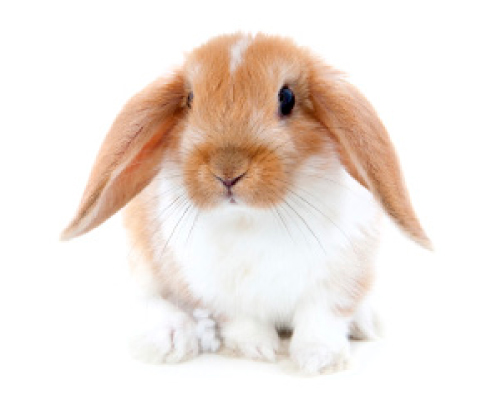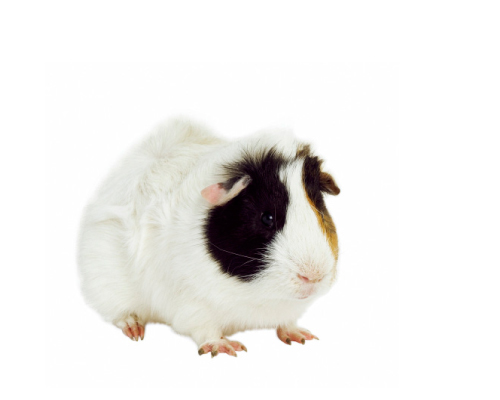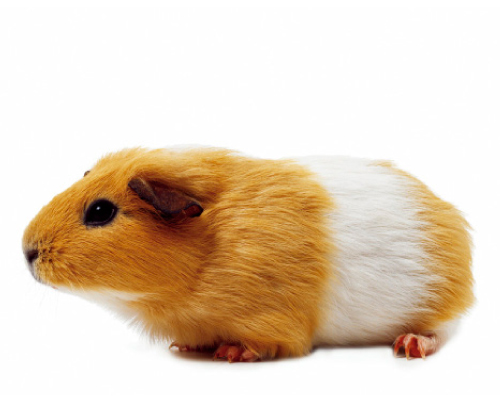
Fact Sheet FS1184
Cavy lice, sometimes referred to as running lice, are host specific and need a guinea pig to survive. These lice are considered chewing lice, not sucking lice, and actually abrade the skin to obtain fluid.
Types
The most common type of louse is Gliricola porcelli. This is a slender, flattened, light colored (white to pale) insect about 1 to 1.5 mm in size with no wings. The lice wriggle and can be seen moving through the fur near the skin and, in heavy infestations, around the eyes. Gyropus ovalis is less common and oval in shape, but is also flattened, with no wings, and from 1 to 1.2 mm in size.
A third, and very rare species of louse, is Trimenopon hispidium. Light infestations are very easily missed while heavy infestations cause hair loss (alopecia), heavy scratching, and a rough coat.
Transmission
Lice seldom leave a host and transmission normally happens through direct contact with another guinea pig or contaminated bedding or other equipment. A person carrying an infested animal can also transfer eggs or lice from their clothing to another animal.
Life Cycle
The life cycle of lice is about three weeks. Eggs are attached to the hairs of the host and a nymph will hatch three to 14 days later. Next it will go through three nymph stages, each about one week, and then molt into an adult and begin to mate continuing the cycle. Lice have no free living stages and will die quickly in the absence of a host.
Symptoms
Lice are typically found around the head, neck, ears, and rump. Some infestations go unnoticed until the animal begins to exhibit physical signs that include:
- Excessive scratching
- Hair loss
- Sores and scabs
- Scaly, dry, and thickened skin
Lice are not normally life threatening, but young, elderly, and weakened animals will suffer more. A heavy infestation may be a symptom of some other underlying condition, including malnutrition, chronic disease, or immune deficiency, since debilitated animals often do not groom themselves, leaving the lice undisturbed.
While G. porcelli and G. ovalis are specific only to guinea pigs, they are highly contagious between guinea pigs. It's important when introducing new pigs into an existing group that they are quarantined and examined for lice.
Topical treatments of ivermectin or imidacloprid can easily kill lice, since they are biting not sucking pests. Treatment with imidaclopid is by weight, usually at 10 mg per pound or 0.1 cc per pound. An application will usually last for up to 30 days. Since ivermectin is a strong drug and absorbed through the skin, an accurate dose is required to avoid side effect—including death.
Insecticides in the class of benzoylphenylureas, such as diflubenzuron and triflumuron, have also been found to be effective in controlling chewing lice. Always carefully read labels to make sure it is appropriate for your animal and for proper dosage. It is always recommended to consult your veterinarian.
References
- Reeves, W. and Miller, M. Spot-on treatments of diflubenzuron and permethrin to control a guinea pig louse. Journal of Entomological Science, 44, 410-411.
- Scott, D., Miller, W., and Saunders, W.B. (2001). Dermatoses of pet rodents, rabbits and ferrets. Muller & Kirk's Small Animal Dermatology, (6th ed., pp. 1415-1453). Philadelphia, Pennsylvania: C E. WB Saunders Company.
Specialist Review
- Changlu Wang, Extension Specialist in Urban Entomology, Department of Entomology, School of Biological and Environmental Sciences, Rutgers, The State University of New Jersey
May 2013
Copyright © 2024 Rutgers, The State University of New Jersey. All rights reserved.
For more information: njaes.rutgers.edu.
Cooperating Agencies: Rutgers, The State University of New Jersey, U.S. Department of Agriculture, and Boards of County Commissioners. Rutgers Cooperative Extension, a unit of the Rutgers New Jersey Agricultural Experiment Station, is an equal opportunity program provider and employer.



